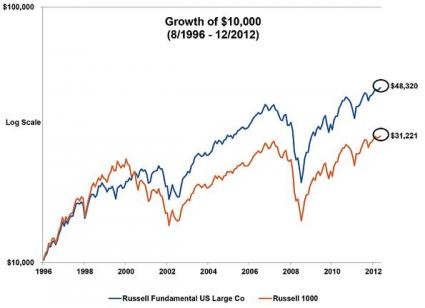3 Excellent REIT ETFs You Should Not Ignore ETF News And Commentary
Post on: 16 Март, 2015 No Comment

As investors continue to search for yield in the current environment of ultra low rates, REITs are becoming increasingly popular due to their solid dividend payouts. In addition to attractive income, REITs have rewarded  investors with excellent capital appreciation over longer term. Further, they add diversification benefits to the portfolio and also act as an inflation hedge.
What are REITs?
REITs own and operate income-producing real estate. They are required to distribute at least 90% of their taxable income to shareholders annually in the form of dividends and in turn, they can deduct those dividends paid from their corporate taxable income.
The Outlook Remains Strong
With gradually improving economy and low interest rates (at least through 2014), the outlook for REITs remains strong. (Read: 4 Excellent Dividend ETFs for Income and Stability )
Residential real estate market has most likely bottomed out and commercials real estate prices are also now significantly up from their year ago levels.
Further, with increasing rents and improving occupancy, the industry fundamentals are expected to remain strong.
REITs in general are now much less leveraged compared to historical levels and many have refinanced their debt at much lower interest rates. Also, many REITs were able to acquire premium properties at attractive prices during the downturn.
REITs in a Portfolio
Many investors wonder whether REITs are closer to equities or to real estate in characteristics
Research shows REITs are highly correlated with equities in the short term but over longer term they exhibit positive correlation with real estate and low or even negative correlation with equities. Thus, they add diversification benefits to the portfolio.
Another debate regarding REITs relates to their ability to hedge against inflation. Assets can be considered effective inflation hedges if they are able to grow their returns with rising inflation. 
Since REITs derive majority of their income from rents, their incomes generally increase with inflation. The following chart from iShares website shows that US REIT dividend yields have consistently exceeded inflation from 1990 through 2010.

On valuation basis, REITs do look expensive compared with the broader markets, after their nice run-up since 2009, but given solid outlook, they are expected to continue to outperform in the near-to-mid term. (Read: 3 High Yield ETFs for Your IRA )
Beware of Mortgage REITs’ Risks
Unlike equity REITs, mortgage REITs do not hold properties, but they invest mainly in mortgage backed securities (MBS) issued by Fannie Mae and Freddie Mac. They use short-term debt for financing their purchases and are usually highly leveraged.
Mortgage REITs have done very well of late as investors have been pouring in money, due to their double digit yield yields. 
They have benefitted from low short term rates but increasing purchases of MBSs by the Fed under QE3 is now driving the yields lower, putting pressure on Mortgage REITs’ profitability. Further, due to their high leverage, they are exposed to greater risk once interest rates start going up. (Read: Best ETF Strategies for 2013 )
Looking at the Performance
After their plunge in 2008, REITs recovered nicely and have been outperforming the broader market for the last four years. While volatility has been high if we look at five years’ history (mainly due to massive plunge in 2008), it has been in-line with the broader market if we look at one year’s performance.














